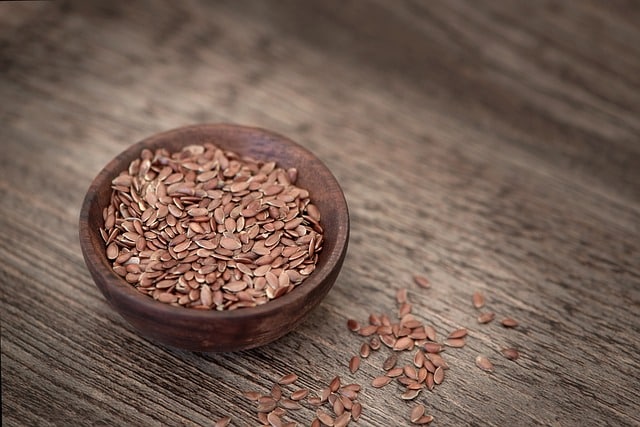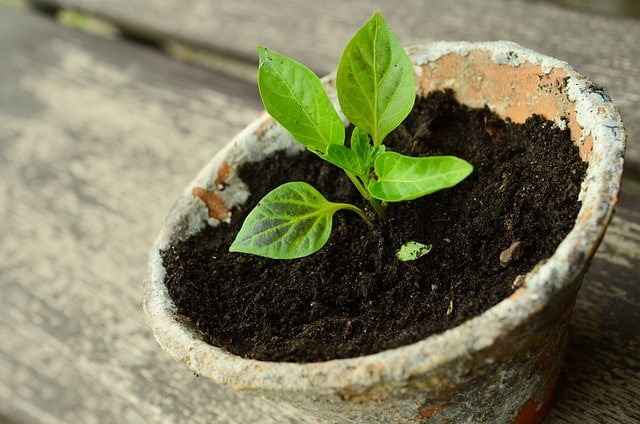Introduction – Basics of Plant Seeds
You have some plant seeds that you want to put away for planting because the conditions aren’t ready or right. Naturally one question that comes up is how long the seeds will last. Plant seeds are how plants reproduce and propagate.
Each seed contains a tiny embryonic plant and food reserves to sustain it until it can establish itself as a new individual. When planted in suitable conditions, the seed absorbs water and begins to grow, eventually developing into a mature plant capable of producing its seeds. In addition to reproducing, many plants rely on their seeds for dispersal, spreading them far and wide through wind, animals, or human intervention.

Different seasons have different weather conditions, which can affect the longevity of plant seeds. In general, seeds from early spring plants tend to germinate quickly since they require less time for the process. Seeds from late spring and summer plants often take longer to germinate, as they need to be exposed to specific temperatures during certain times to sprout properly.
Some seeds can even lie dormant for years before finally germinating when conditions are right. The production and dispersal of seeds are vital for maintaining biodiversity and ensuring the survival of plant species. From small wildflowers to towering trees, the versatile humble seed sits at the heart of plant life on Earth.
How Long Do Plant Seeds Last?
The answer depends on the type of seed and storage conditions. Annual flower seeds survive for a few years before losing their viability. On the other hand, certain tree seeds, such as acorns and pine cones, can stay viable for decades or even centuries under the right conditions. So as a conservative estimate, plant seeds will last for any amount of time from a few years to decades.
Proper storage plays a key role in preserving seed viability. Keeping them cool and dry can prolong their life significantly, while exposure to heat and moisture can cause them to spoil much more quickly.
It’s important to note that even if a seed is still technically viable, its ability to germinate successfully and grow into a healthy plant may decrease over time. So while it’s always worth trying to plant old seeds, it may be beneficial to also have newer seeds on hand as a backup. Ultimately, proper storage and rotating your seed supply can help ensure that you always have access to fresh, viable seeds.
And for those true plant enthusiasts, it might be worth investing in a seed bank to ensure the long-term survival of prized varieties. In any case, maintaining good storage practices will help maximize the lifespan of your precious seeds.
Seed Viability And Longevity Chart
The seed viability chart below shows the percentage of viable seeds in a given sample. It is also used to determine the shelf life of a given seed sample. This chart can be used to assess the quality of a seed sample and can also be used to predict the expected shelf life of a given sample. The source of this chart is a Colorado State University Extension class on storing vegetable and flower seeds.
| Seed Type | Longevity (years) |
| Asparagus | 3 |
| Beans | 3 |
| Beets | 4 |
| Broccoli | 3 |
| Brussels sprouts | 4 |
| Cabbage | 4 |
| Cabbage, Chinese | 3 |
| Carrot | 3 |
| Cauliflower | 4 |
| Celeriac | 3 |
| Celery | 3 |
| Chard, Swiss | 4 |
| Chicory | 4 |
| Corn, sweet | 2 |
| Cucumber | 5 |
| Eggplant | 4 |
| Endive | 5 |
| Kale | 4 |
| Kohlrabi | 3 |
| Leek | 2 |
| Lettuce | 1 |
| Muskmelon | 5 |
| Okra | 2 |
| Onion | 1 |
| Parsley | 1 |
| Parsnip | 1 |
| Pea | 3 |
| Pepper | 2 |
| Pumpkin | 4 |
| Radish | 4 |
| Rutabaga | 4 |
| Salsify | 1 |
| Spinach | 3 |
| Spinach, New Zealand | 3 |
| Squash | 4 |
| Tomato | 4 |
| Turnip | 4 |
| Watermelon | 4 |
What Factors Affect How Long Plant Seeds Last?
Regarding the shelf life of plant seeds, there are a few key factors to consider. The first is the plant’s genetic makeup – some species have inherently longer-lasting seeds than others.
Next, environmental conditions also play a role in seed longevity. Excessive heat or moisture can greatly shorten the lifespan of seeds, while proper storage in a cool and dry place can help extend their viability. Furthermore, the age of the seed also affects its longevity – in general, freshly harvested seeds will last longer than those stored for an extended period.
Finally, the handling and packaging of seeds can impact their shelf life – damaged or improperly sealed packaging may result in decreased viability. By considering these factors and taking appropriate steps, gardeners can ensure they have a supply of viable seeds at their disposal for many seasons.
How To Store Plant Seeds For The Longest Life?
Storing your plant seeds properly is essential for ensuring their long-term viability. It’s necessary to keep them cool and dry, ideally at around 50 degrees Fahrenheit. Here are some tips for achieving optimal storage conditions:
1) Place the seeds in a dry, airtight container. Moisture and oxygen can both contribute to deterioration and lower germination rates.
2) Store your seeds in a cool, dark place, such as a refrigerator or basement. Excessive heat can also speed up deterioration.
3) Label your containers with the type of seed and storage date to track when they were collected and when you should plant them.
Finally, handling your seeds with care is also important, as rough handling or exposure to sunlight or pests can reduce their lifespan. With these tips in mind, you can help ensure that your plant seeds are preserved effectively and will continue to produce healthy plants for years to come. Following these guidelines ensures that your plant seeds remain viable and ready for use in future growing seasons.

How To Tell If A Seed Is Still Viable?
Knowing whether or not a seed is still viable can be tough for gardeners. Fortunately, a few simple methods can help you determine if your seeds are ready to plant.
First, check the appearance of the seed. Viable seeds will often have a smooth, unbroken outer shell. Seeds that are cracked or wrinkled may still be able to germinate, but they may not be as strong as their unbroken counterparts.
Another way to test seed viability is through floatation: fill a glass or bowl with water and drop the seed. Viable seeds will sink to the bottom, while nonviable seeds will float on top.
Finally, you can conduct a germination test by moistening paper towels and placing 10-20 seeds between them. Put the towels in a plastic bag or covered container and keep them at room temperature for about a week, checking for signs of growth daily.
Count the number of seeds germinating and divide by the total number of seeds tested to find your germ rate percentage. If the percentage is below 80%, it may be time to invest in fresh seeds. By using these methods, you can determine whether your seeds are still viable and ready for planting success.
Tips To Revive Old Seeds
Old seeds can be made more likely to germinate by soaking them in warm water for 12-24 hours, scarifying the seed coat if possible, stratifying them in moist sphagnum moss, vermiculite, or sand in the refrigerator for 2-3 weeks, planting them in a warm, light-filled area, keeping the soil moist but not soggy, and monitoring the progress of germination to keep the temperature consistent. With these steps, old seeds will have a greater chance of successful germination.
When To Replant Seeds To Get The Best Results?
When it comes to replanting seeds, timing is everything. When sowing indoors, it’s best to start about six to eight weeks before the last frost date in your area. When transplanting seedlings outdoors, wait until all danger of frost has passed and the soil has warmed up. It’s also important to consider the specific needs of each plant variety.
For example, some vegetables and flowers do best when direct-sown in their final location, while others do better with starting indoors and transplanting later on. Pay attention to planting instructions on seed packets, and consult local resources for your region’s average frost dates and growing season.
Wrapping Up
In conclusion, seed lasts the longest and germinates best when stored in a cool, dry environment. You can use several methods to test seed viability, including floatation tests, germination tests, and checking the appearance of the seeds themselves. When replanting your seeds, it is important to consider each plant variety’s timing and specific needs.
